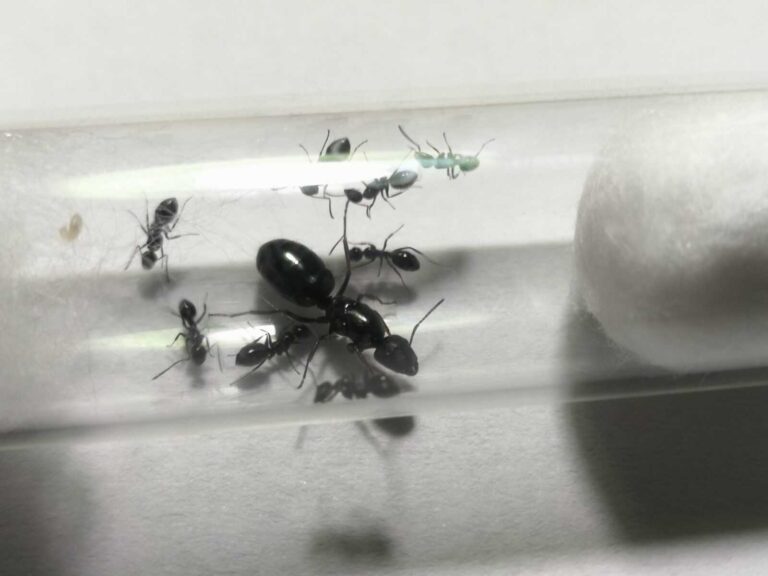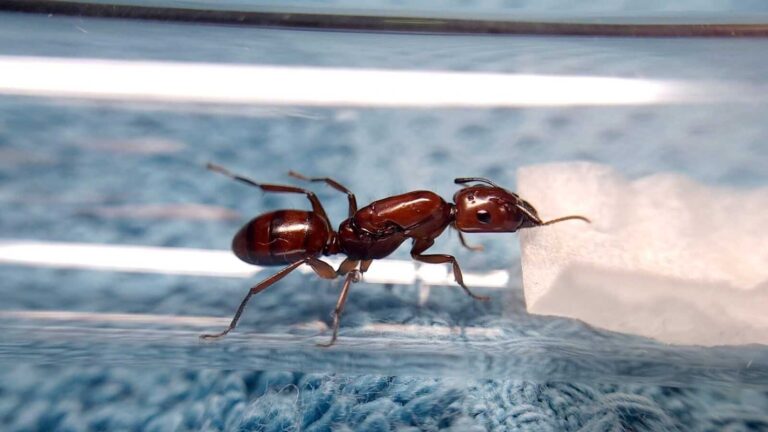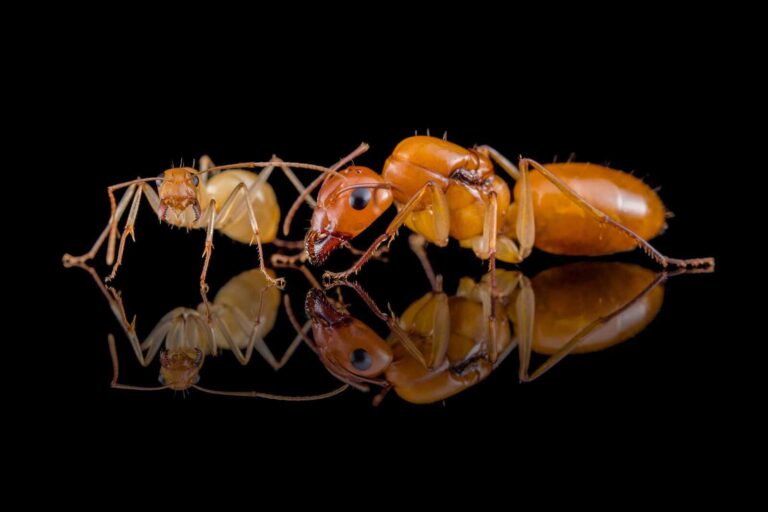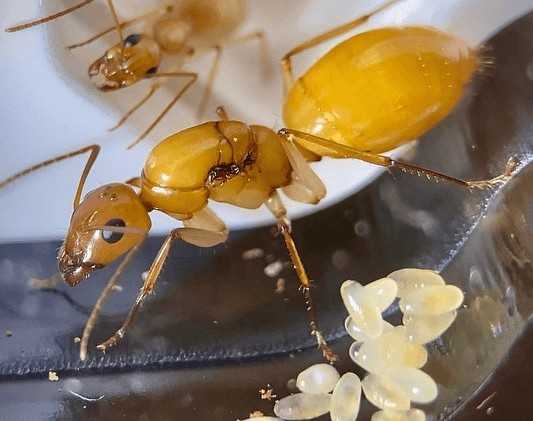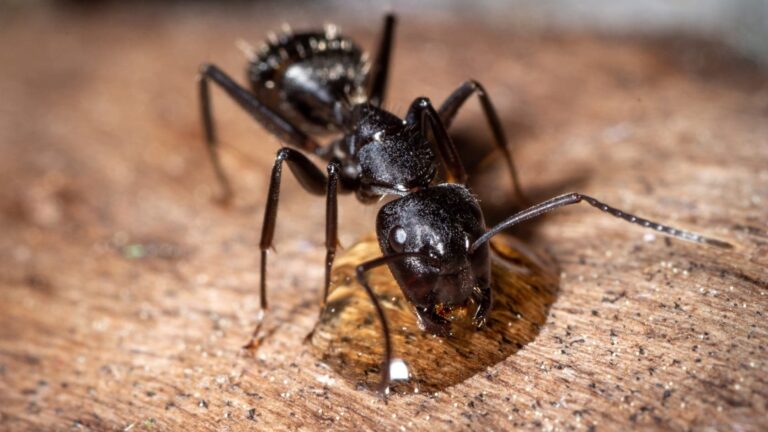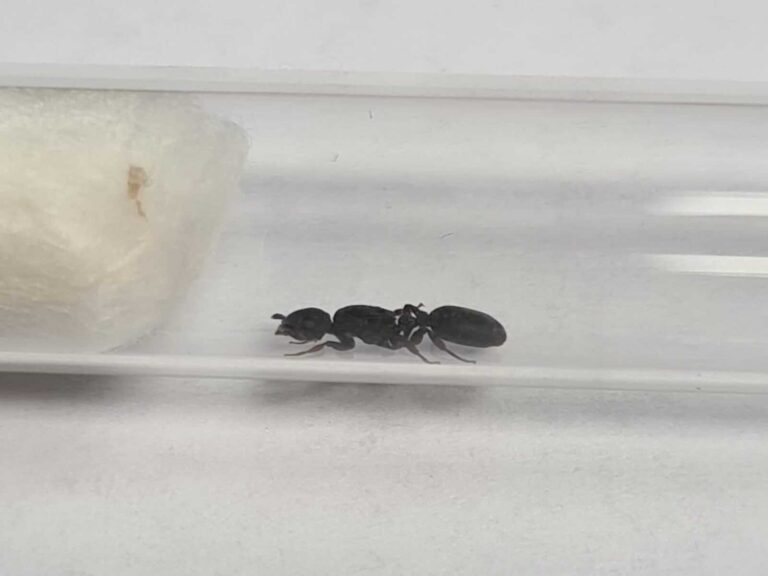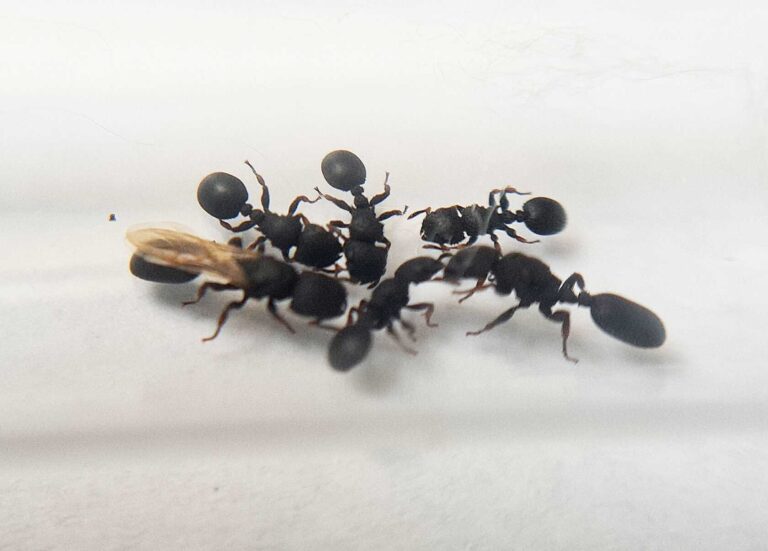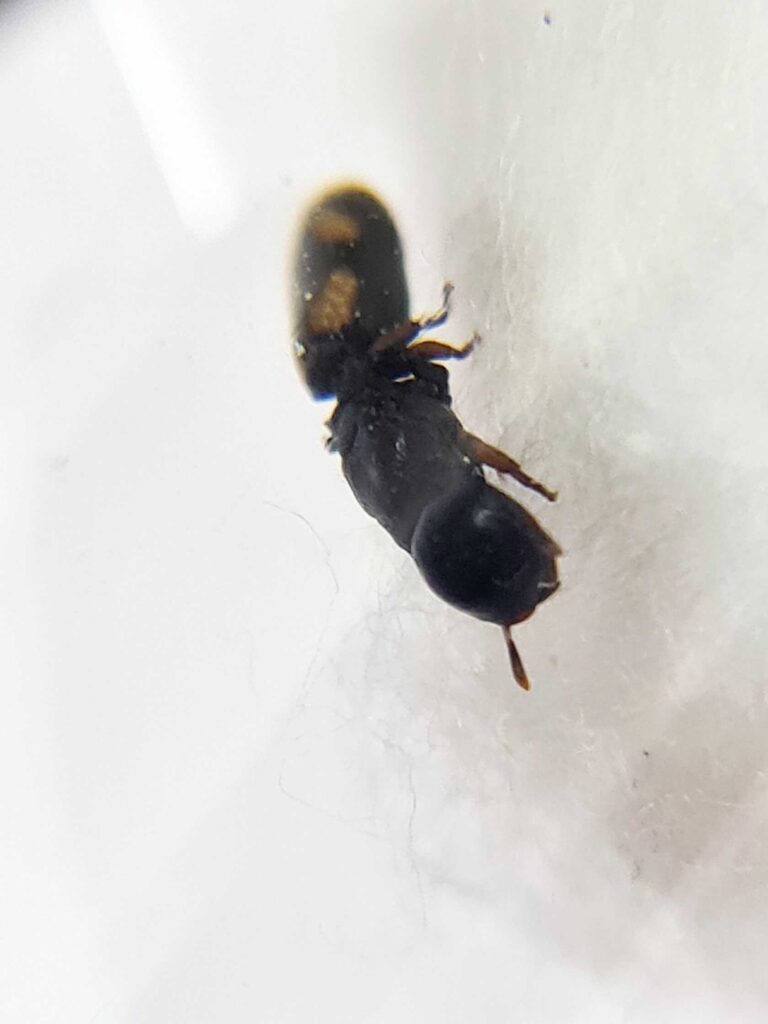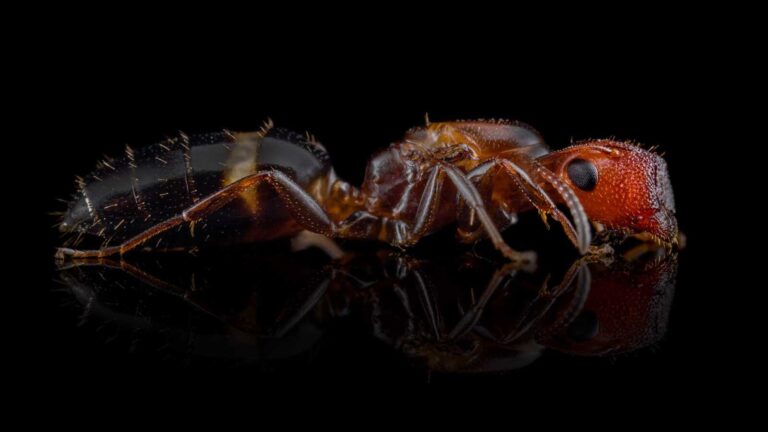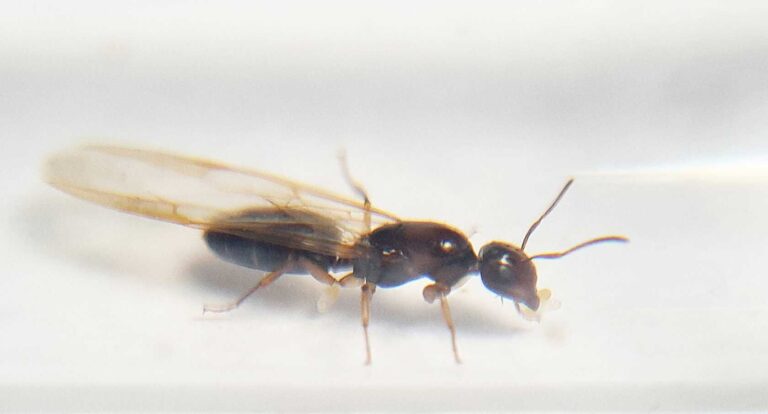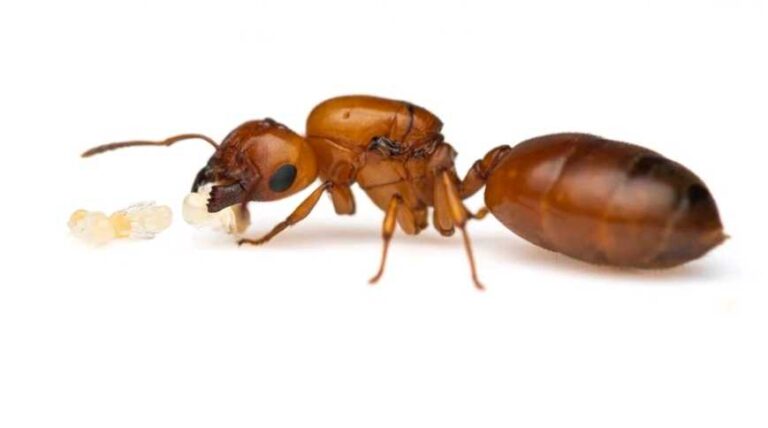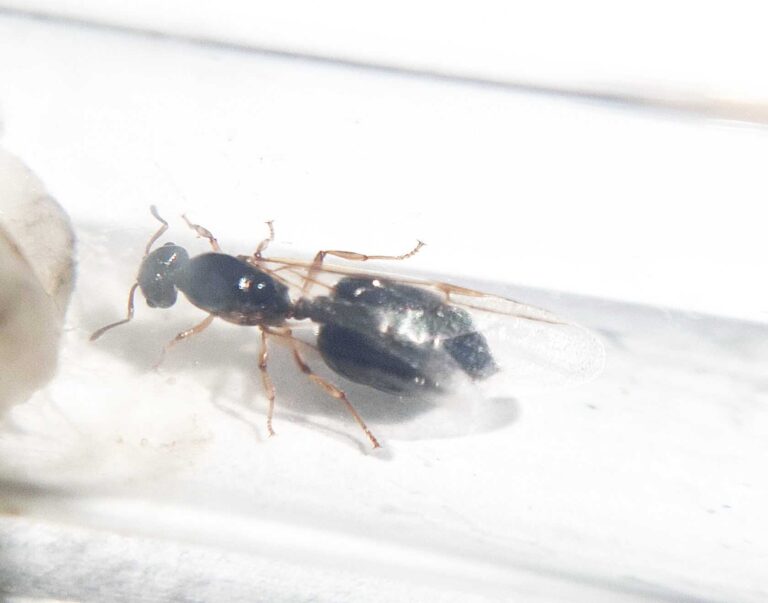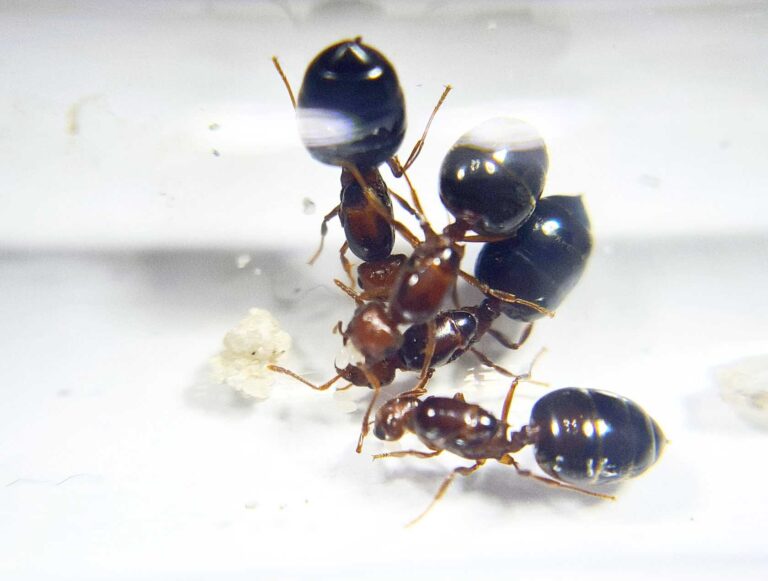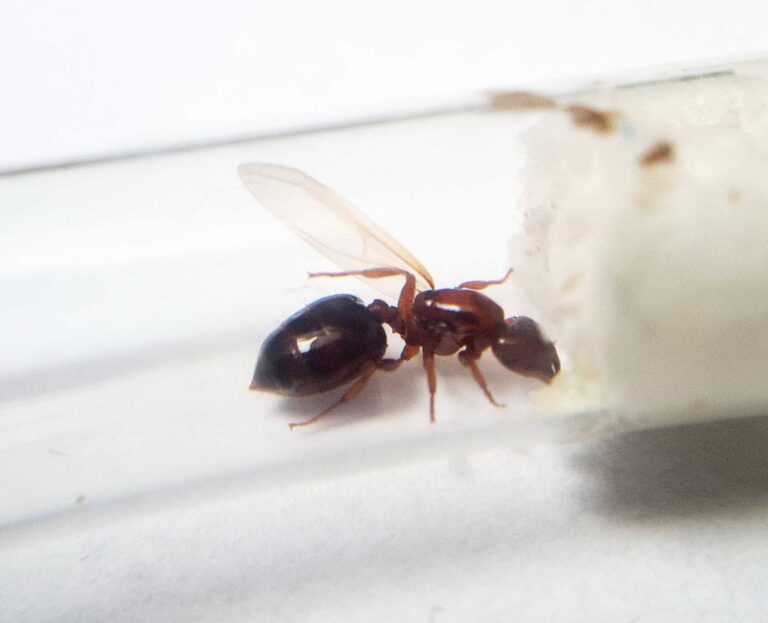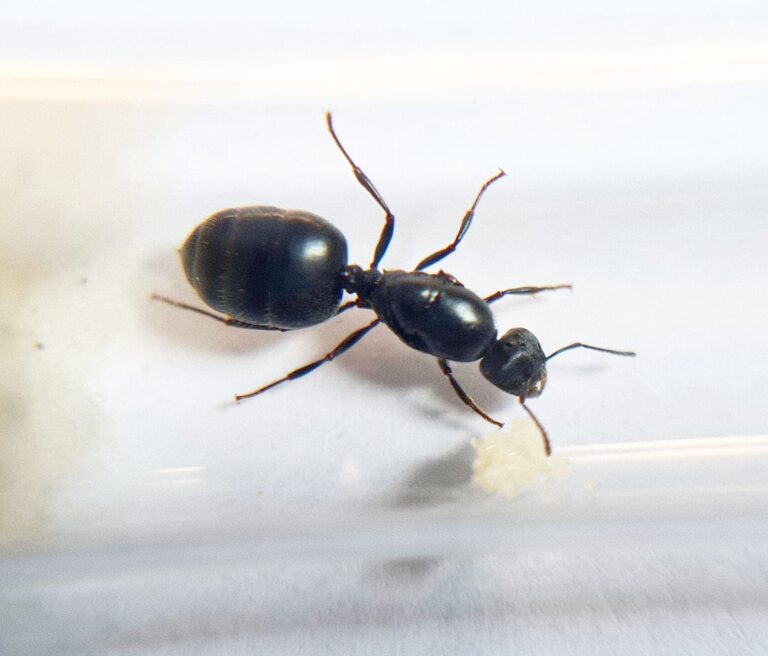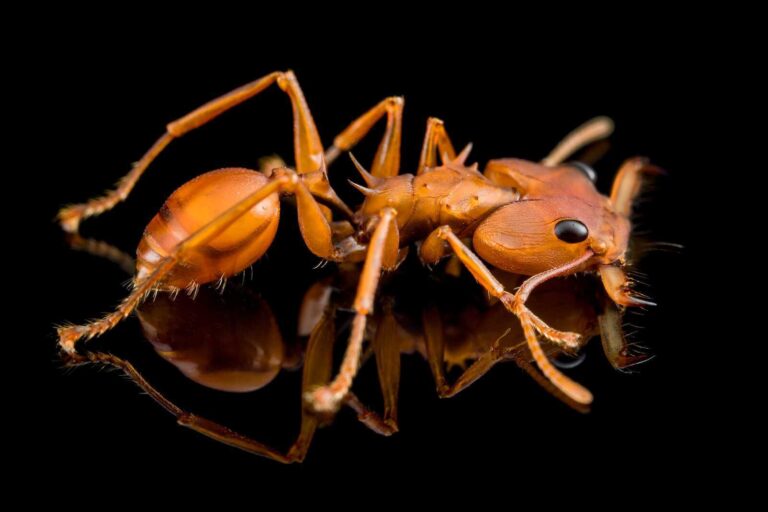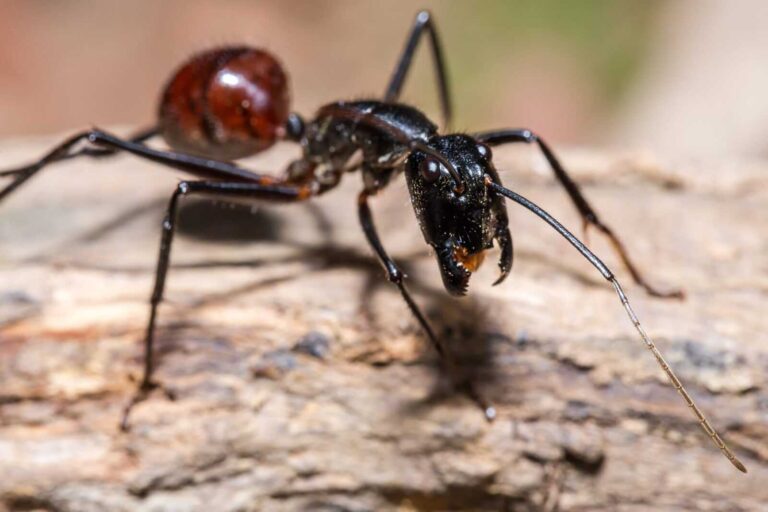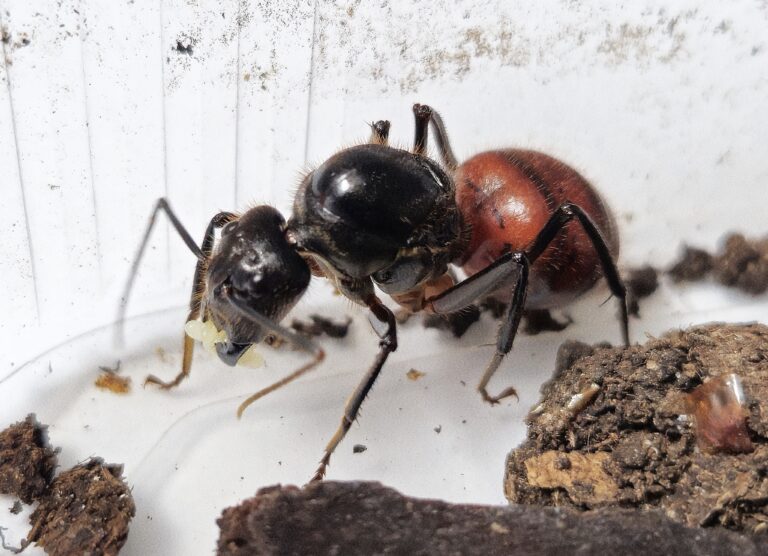Showing 41–60 of 74 results
- Queen 74
- Queen and 1-3 workers 74
- Queen and 4-10 workers 74
- Queen and 11-20 workers 74
- Queen and 21-40 workers 73
- Queen and 41-60 workers 73
- Queen and 61-100 workers 50
- Queen and 101-200 workers 5
- 2 Queens 6
- 2 Queens and 1-3 workers 6
- 2 Queens and 4-10 workers 6
- 2 Queens and 11-20 workers 6
- 2 Queen and 21-40 workers 6
- 2 Queens and 41-60 workers 6
- 2 Queens and 61-100 workers 3
- 2 Queens and 101-200 workers 2
- 3 Queens 3
- 3 Queens and 1-3 workers 3
- 3 Queens and 4-10 workers 3
- 3 Queens and 11-20 workers 3
- 3 Queens and 21-40 workers 3
- 3 Queens and 41-60 workers 3
- 3 Queens and 61-100 workers 2
- 3 Queens and 101-200 workers 1
MicroMicro 3
SmallSmall 22
MediumMedium 35
LargeLarge 10
HugeHuge 4
Camponotus piceus is a monogynous ant species with colonies that can reach up to 1000 worker ants. They have a medium development rate. The queen is 8-10 mm in size, while the workers are 3-5 mm and the majors are 7-8 mm. They have a glossy black color. Their nutrition includes food insects, syrup, fruits, vegetables, jelly, and cooked chicken without salt.
Camponotus quadrisectus is a monogynous ant species with a colony size of up to 5,000 workers. The ants have a medium development rate and come in various sizes, with queens measuring 15-17 mm and workers measuring 4-8 mm. They are light reddish brown in color and their diet consists of food insects, syrup, fruit, vegetables, jelly, and cooked chicken without salt.
Camponotus turkestanus is a gold-colored ant species with a colony size of up to 10,000 workers. They have a monogyny or sometimes poly colony type and a medium development rate. Their nutrition consists of food insects, syrup, fruit, vegetables, jelly, and cooked chicken. The queen measures 12-15mm, workers are 5-10mm, and majors range from 6-16mm.
Camponotus vagus is a glossy black ant known for its calm nature. With monogynous colonies of up to 10,000 workers, their slow development rate is compensated for by the large colony size. The queen measures 14-17 mm, while the workers range from 5 to 9 mm in length.
Cataulacus granulatus is a polygynous ant species with a fast development speed. The colony size is approximately 1000 individuals. The queen measures 7-9 mm in size, while the workers measure 5-6 mm. They are black in color. Their nutrition consists of food insects, syrup, fruit, vegetables, jelly, and cooked chicken without salt. The required humidity level is not specified.
The captivating ant species, Cataulacus horridus, is loved by ant-keepers for its unique characteristics and interesting behaviors. With the ability to thrive in polygynous colonies, this species amazes enthusiasts with its harmonious coexistence of multiple queens. Discover the allure of Cataulacus horridus and its intriguing social structure.
The Cephalotes Minutus ants are a unique species known for their polygynous colonies and colony sizes of up to 10,000 workers. With a moderate development speed, these ants are fascinating to observe and care for.
Colobopsis truncata is a monogynous ant species with colony sizes of up to 1000 workers. They have a medium development speed and typically measure 6-8mm for queens and 3-5mm for workers. They are reddish brown in color, with a brownish-black belly and top of the head. Their diet consists of food insects, syrup, fruit, vegetables, jelly, and cooked food.
Colobopsis vitrea is a monogynous ant species with a colony size of up to 1000 workers. They have a medium development speed and their queen is 8-11mm in size while workers are 3-7mm. The ants are reddish brown in color and can be fed with food insects, syrup, fruit, vegetables, jelly, and cooked chicken without salt.
Crematogaster castanea is a monogynous ant species with colonies consisting of a single queen and up to 20,000 workers. They have a fast development rate and are characterized by their orange-red coloration with black markings. They require a specific humidity level of 30-50% in their hunting area and 50-70% in their nest. The temperature requirements are not specified.
Crematogaster cerasi is a monogynous ant species with colonies of up to 20,000 workers. They have a fast development speed and the queen is 7-8 mm in size while the workers are 3-4 mm. They are shiny black in color and their nutrition consists of insect food, syrup, fruit, vegetables, jelly, and cooked chicken without salt.
Crematogaster jardinero is a monogynous ant colony with a size of up to 20,000 workers. They have a fast development speed and can reach sizes of 11-12mm for the queen and 5-6.5mm for the workers. They have a black body with yellow legs and their nutrition includes insect food, syrup, fruits, vegetables, jelly, and cooked chicken without salt.
Crematogaster minutissima is a monogynous ant species with colonies of up to 10,000 workers. They have a fast development speed and the queen measures 5-7 mm while the workers are 2-3.5 mm in size. They are yellow, with a brownish-yellow tint. Their diet includes food insects, syrup, fruits, vegetables, jelly, and cooked chicken.
Crematogaster modiglianii is a polygynous ant species with a fast development speed. The colony can reach up to 20,000 workers. The queen measures 8-9 mm, while the workers measure 3-4.5 mm. They have a black abdomen and dark brown body. Their nutrition consists of insect food, syrup, fruits, vegetables, jelly, and cooked chicken without salt.
Crematogaster nigeriensis is a polygynous ant species with colonies that can contain up to 10,000 workers. They have a fast development speed and the queen is about 8.5-9.5 mm in size while workers are 3.2-3.8 mm. They have a brown body and black abdomen. Their nutrition consists of food insects, syrup, fruit, vegetables, jelly, and cooked chicken without bones.
Crematogaster quadriruga is a monogynous ant species with a colony size of up to 20,000 workers and a fast development speed. The queen measures 6-7.5mm, while workers are 1.4-2mm in size. They have a yellow body with a black tip on the abdomen. Their nutrition consists of insect food, syrup, fruit, vegetables, jelly, and cooked chicken.
Crematogaster rochai is a monogynous ant species with colonies of up to 20,000 workers. They have a fast development speed. The queen measures 12-14 mm and workers are 5-6.5 mm. Their head is orange or brown-orange, while the rest of their body is dark brown. They primarily feed on insect food, syrup, fruit, vegetables, jelly, and cooked chicken.
Crematogaster senegalensis is a monogynous ant species with colony sizes of up to 10,000 workers. They have a fast development speed and their queen measures 12-15 mm while workers are 2-5 mm in size. These black ants require a diet of insect food, syrup, fruits, vegetables, jelly, and cooked chicken without salt. They thrive in an arena with humidity levels between 30-60%.
Daceton armigerum ants are small, orange-colored ants with a unique head and body structure. They form monogynous colonies with a single queen and have a moderate development speed. These ants typically nest in tree holes and can grow into colonies of up to 2000 individuals.
Dinomyrmex gigas is a monogynous ant species with colonies of up to 2000 workers. They have slow development speed. The queen measures 29-36 mm, workers are 18-24 mm, and majors are 23-28 mm. They are black with a red-orange flake coloration. Their diet includes food insects, syrup, fruit, vegetables, jelly, and cooked chicken.


